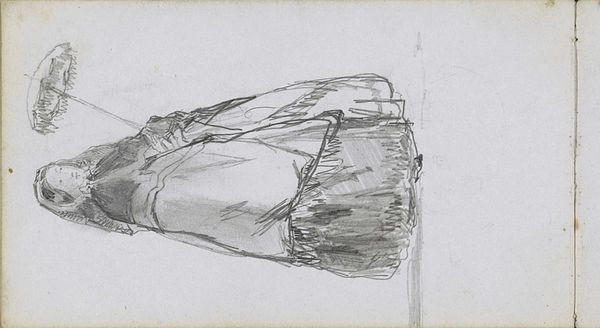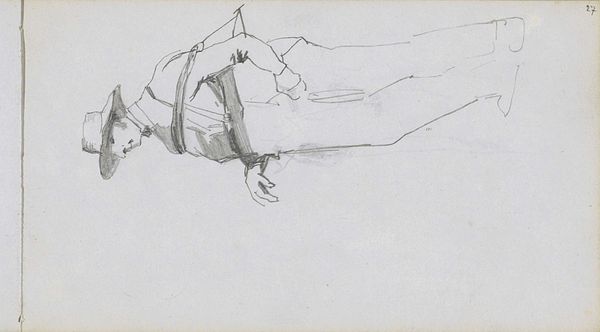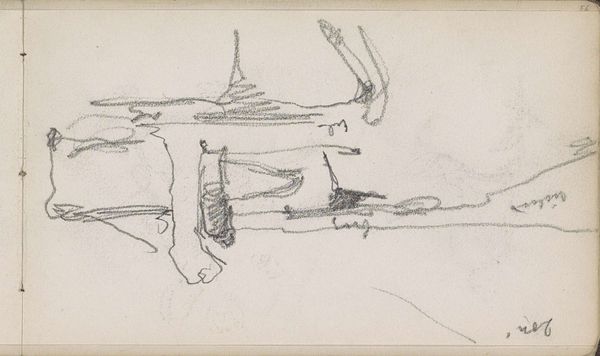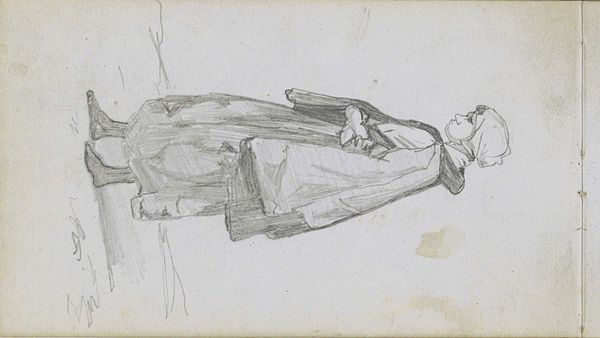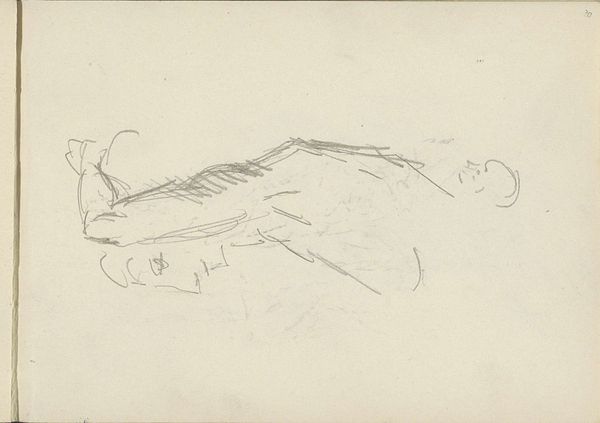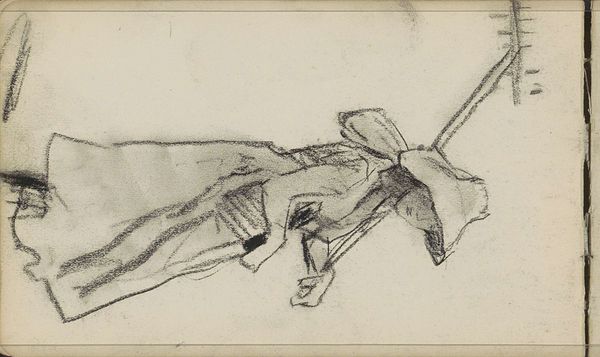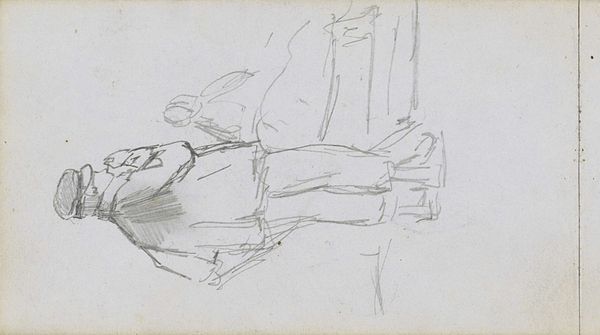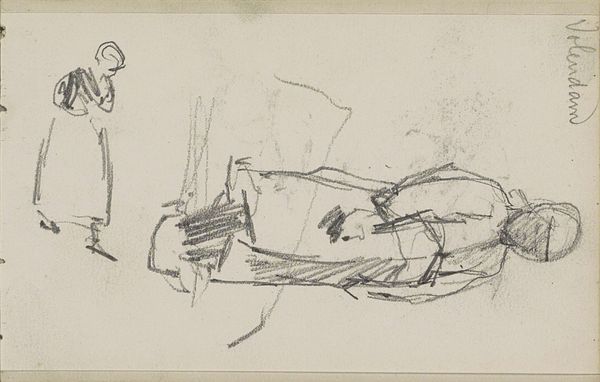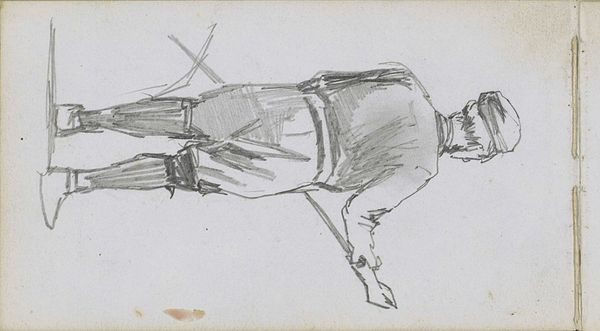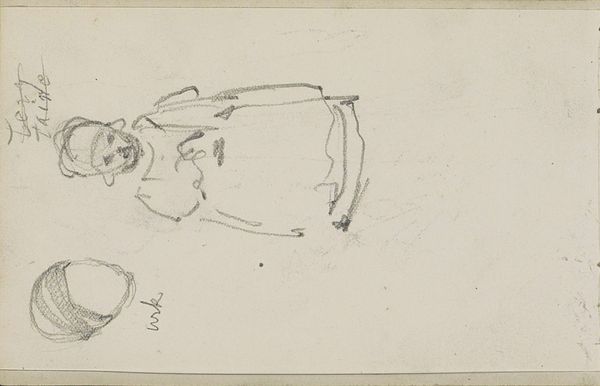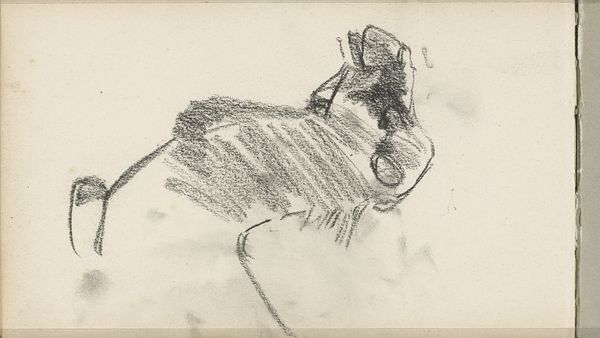
drawing, pencil
#
portrait
#
drawing
#
pencil sketch
#
figuration
#
pencil
Copyright: Rijks Museum: Open Domain
Editor: Here we have Johan Hendrik Weissenbruch's "Standing Woman with a Cap and Bucket," made with pencil sometime between 1834 and 1903. It’s a very simple, quick sketch and almost feels… melancholic. What stands out to you about this work? Curator: What immediately grabs my attention is the stark contrast between the visible effort in depicting this working woman and the somewhat detached way we often perceive art from this period, particularly quick sketches like this one. How do institutions like the Rijksmuseum shape our understanding and appreciation of what might have been a private study? Editor: That’s an interesting point. We’re seeing something that wasn't necessarily intended for public consumption displayed very publicly. Does that change how we should interpret it? Curator: Absolutely. It invites us to consider the socio-political context in which Weissenbruch created this drawing. What statements was Weissenbruch, intentionally or not, making about women's roles or labor during this time period? Editor: So, viewing it through that lens, is the sketch elevating the status of this working woman or merely documenting her? Curator: I would argue it is likely somewhere in the middle. By depicting this woman, Weissenbruch is, on some level, acknowledging her presence and labor. The relative sketchiness also acknowledges an art world system which largely prioritized other subject matters and artworks. Editor: That makes sense. I’d never considered the power dynamics inherent in what gets chosen for preservation. Curator: Precisely. Reflecting on the choices museums make about what and whom they showcase reveals our biases and value judgements. What a thought-provoking sketch! Editor: I agree. It’s made me reconsider how artworks end up in museums, not just what’s hanging on the walls.
Comments
No comments
Be the first to comment and join the conversation on the ultimate creative platform.
